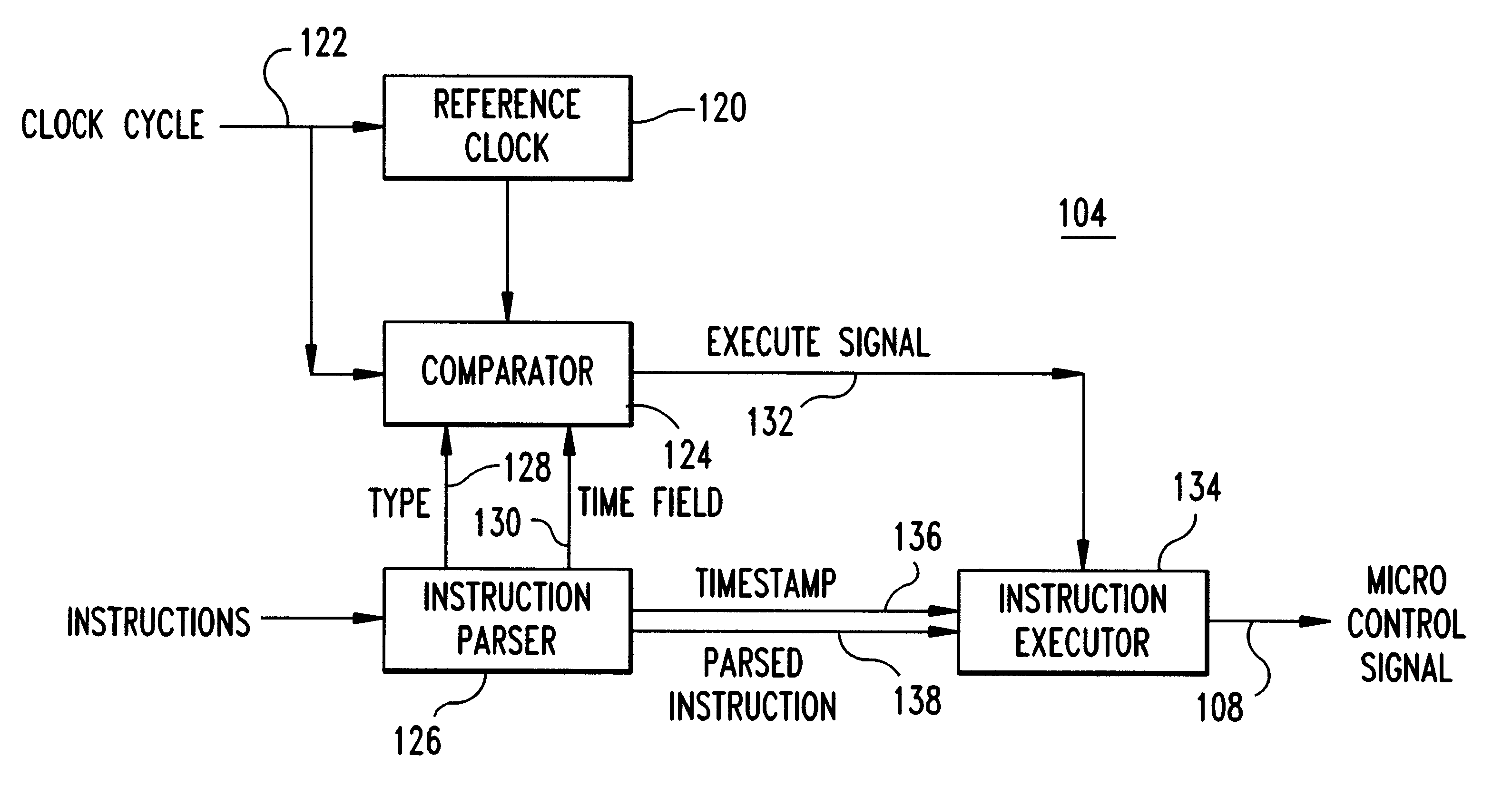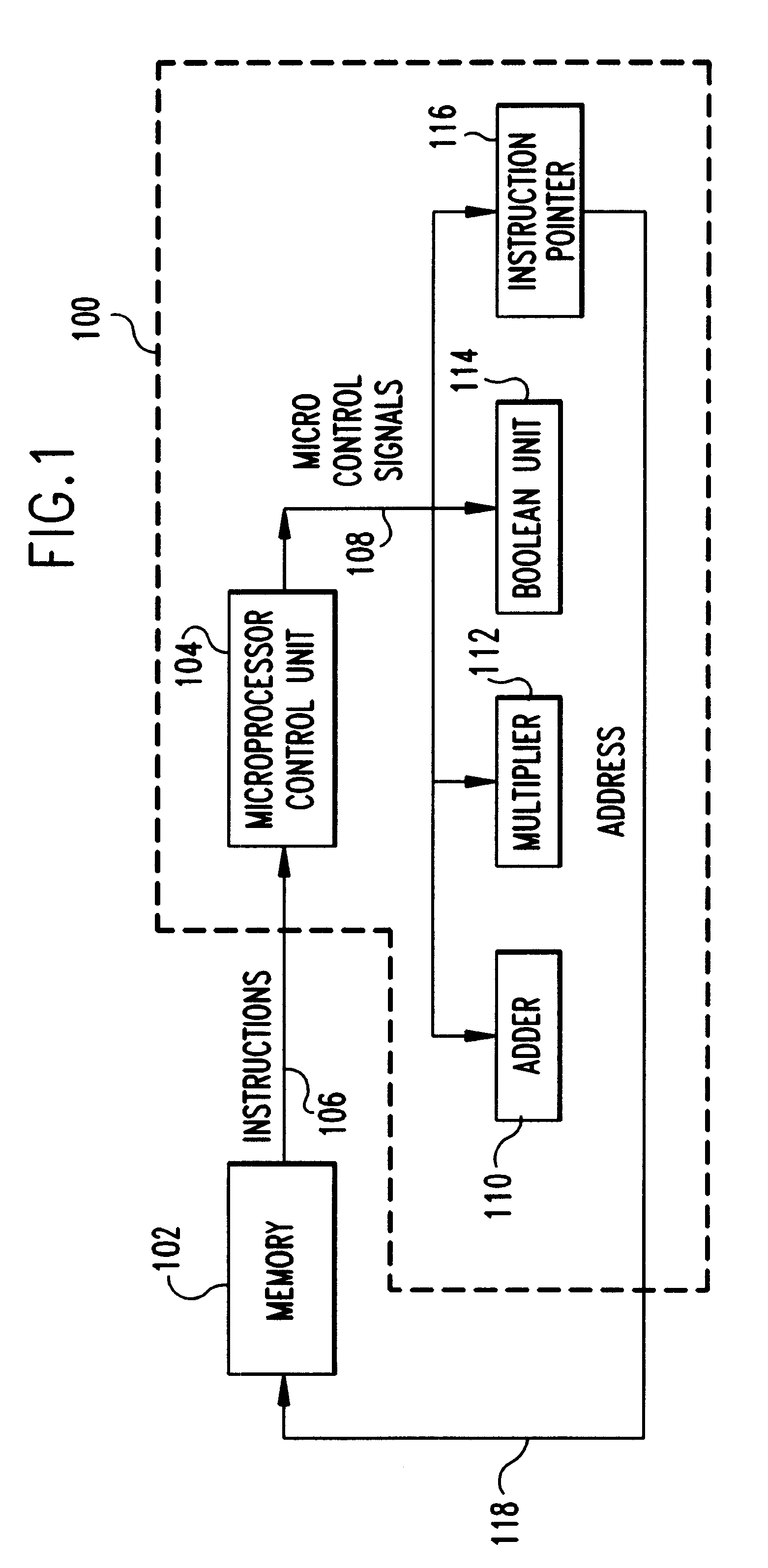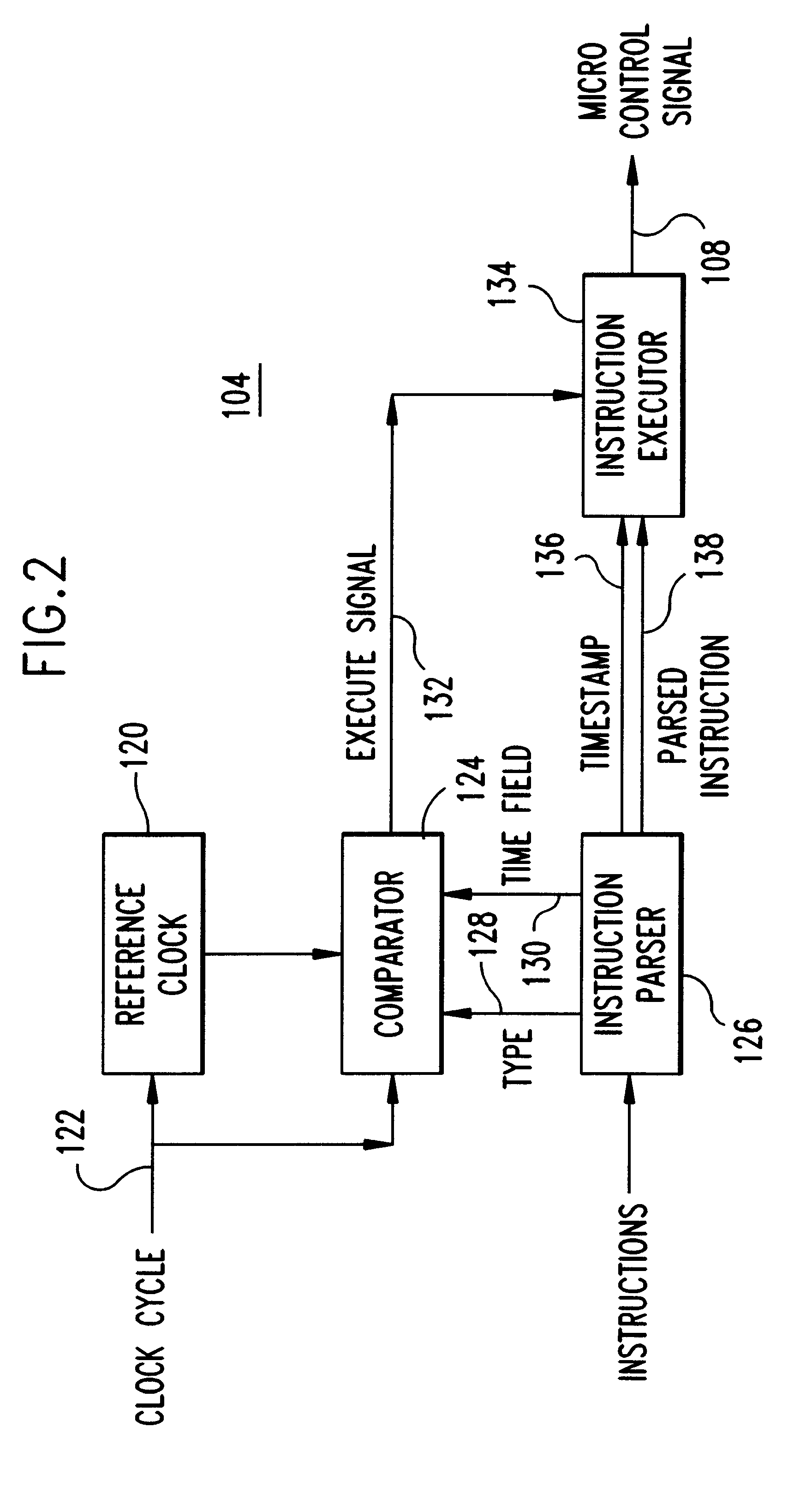System and method for temporally controlling instruction execution
a technology of temporally controlling instruction execution and instruction, which is applied in the direction of computation using denominational number representation, generating/distributing signals, instruments, etc., can solve the problems of program event-driven, prior art program execution methods are no longer acceptable, and the execution speed of instructions is limited only by the speed of the underlying hardwar
- Summary
- Abstract
- Description
- Claims
- Application Information
AI Technical Summary
Problems solved by technology
Method used
Image
Examples
Embodiment Construction
Referring now to the drawings and, more particularly, FIG. 1, a simplified block diagram of a microprocessor 100 and memory 102. A Microprocessor Control Unit (MPCU) 104 fetches instructions from the memory 102 on instruction bus (Ibus) 106. After parsing the instructions, the MPCU 104 generates Micro Control Signals which are passed on Micro Control Signals bus (.mu.CSbus) 108 to various functional units 110, 112, 114 and to Instruction Pointer 116, which provides an address on address bus 118 for the next instruction to be executed.
FIG. 2 is a detailed example of a preferred embodiment MPCU 104. Reference Clock counter 120 is a multi-bit counter that increments on every cycle of the master clock provided at Clock Cycle input 122. The Reference Clock counter 120 is initialized at program start. Comparator 124 monitors the Reference Clock counter 120. Instruction Parser 126 parses instructions, stripping off timestamp information from Timestamped Instructions.
When such a timestamped...
PUM
 Login to View More
Login to View More Abstract
Description
Claims
Application Information
 Login to View More
Login to View More - R&D
- Intellectual Property
- Life Sciences
- Materials
- Tech Scout
- Unparalleled Data Quality
- Higher Quality Content
- 60% Fewer Hallucinations
Browse by: Latest US Patents, China's latest patents, Technical Efficacy Thesaurus, Application Domain, Technology Topic, Popular Technical Reports.
© 2025 PatSnap. All rights reserved.Legal|Privacy policy|Modern Slavery Act Transparency Statement|Sitemap|About US| Contact US: help@patsnap.com



